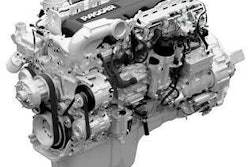Considering that tires burn through a maintenance budget faster than almost everything else, it makes a great deal of financial sense to not jump blindly into decisions when it comes to a mounting a fresh set of rubber.
Tire performance gets a little better – more fuel efficient with extended miles to removal – every few years, but without an effective strategy to test and track over their lifecycle reaping maximum benefit is often nothing more than dumb luck.
“In the early days, we threw a few tires out there and said, ‘How’d they run,” says PIT Group Consultant Dwayne Haug.
“In the real world, conducting a tire test is a challenge and can be a real pain in the butt,” Tirestamp President Peggy Fisher adds. “Stuff happens. Tires get damaged, retreaded or not put back on the vehicle. But running a test is more than just saying, ‘Let’s throw a set of tires on a truck and see what happens.'”
Fisher says tire tests are helpful to compare brands, find the best fuel economy among various brands, determine which brands can be retread more or better than others, evaluate various pressure settings, gauge the benefits of a tire inflation system (TPMS) or to compare different TPMS platforms.
Randy Patterson, senior field engineer for Bridgestone Americas Tire Operations, says it’s best to clearly define your goals for the test before it starts, whether that is finding the best tread life, best fuel mileage, puncture resistance or casing retreadability.
“Don’t put tires on the ground just so the salesman will leave you alone,” he says.









